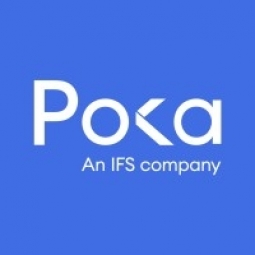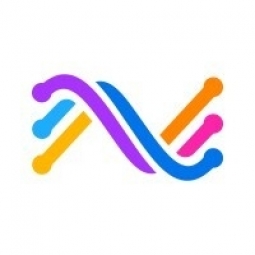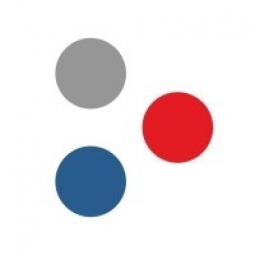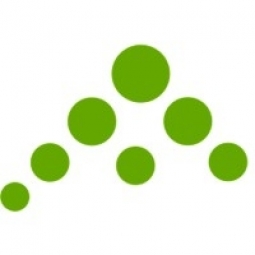Case Studies.
Add Case Study
Our Case Study database tracks 22,657 case studies in the global enterprise technology ecosystem.
Filters allow you to explore case studies quickly and efficiently.
Download Excel
Filters
-
(6,653)
- (2,601)
- (2,127)
- (945)
- View all
-
(5,642)
- (2,469)
- (1,692)
- (826)
- View all
-
(5,571)
- (2,178)
- (1,766)
- (643)
- View all
-
(5,247)
- (2,179)
- (1,715)
- (1,321)
- View all
-
(2,881)
- (1,448)
- (574)
- (376)
- View all
- View all 15 Technologies
- (1,985)
- (1,985)
- (1,915)
- (1,679)
- (1,629)
- View all 42 Industries
- (8,728)
- (4,742)
- (3,618)
- (3,233)
- (2,947)
- View all 13 Functional Areas
- (3,304)
- (2,787)
- (2,603)
- (2,006)
- (1,630)
- View all 129 Use Cases
- (13,581)
- (5,296)
- (4,272)
- (3,520)
- (2,856)
- View all 9 Services
- (504)
- (432)
- (416)
- (382)
- (301)
- View all 1083 Suppliers
Selected Filters

|
UiPath's Journey to Brand Consistency with Writer
UiPath, a leading enterprise software company, faced a significant challenge in maintaining brand consistency as it grew rapidly. A few years ago, the company underwent a complete brand revamp, evolving into a conversational, friendly, and engaging brand voice. However, as the company expanded, it struggled to maintain this brand voice across all its content. The company lacked a single source of truth for identifying how to format a product name correctly or how to write and sound like UiPath. The initial solution was a 65-page content style guide, but it proved to be a burden to distribute and expect all contributors to understand and follow it. The challenge was to find a dynamic, living, breathing source that could help maintain brand consistency across the company.
|
|
|

|
Enzo's Market: Leveraging IoT for Local Business Growth
Enzo’s Market, a neighborhood-influenced grocery store and cafe in Chattanooga, Tennessee, faced the challenge of encouraging customers to explore their unique, local, and organic goods. Despite being a beloved local business, the store needed to attract more people, particularly from its primary demographic of young, savvy adults. The owners were hesitant to spend money on social media advertising, which was a common method of reaching out to potential customers. However, they realized the need to increase awareness and visitors from the neighborhood. The biggest challenge was to find an effective advertising method that would not only attract more customers but also provide a good return on investment.
|
|
|

|
Digital Advertising Boosts Local Reach for Mable's Smokehouse
Mable’s Smokehouse, a family-run business in Williamsburg, Brooklyn, is known for its authentic Texas-style BBQ. Despite having a strong reputation and a loyal customer base, the business faced the challenge of expanding its reach within the local community. The traditional word-of-mouth method was not sufficient to attract new customers. The owners, Meghan Love and Jeff Lutonsky, were initially skeptical about digital advertising. They had been approached by numerous advertising platforms but were unsure about the effectiveness and return on investment (ROI) of these digital marketing strategies.
|
|
|

|
Cars.com Enhances On-the-Lot Experiences and Footfall Attribution with Radar Geofences
Cars.com, a leading digital automotive marketplace, faced a significant challenge in managing large amounts of dealership location information. This data was crucial for powering and reporting on the digital experiences that connect car shoppers with sellers. The company's data, operations, and product teams needed to efficiently handle this information to ensure meaningful interactions across the buying journey. The legacy systems in place were not sufficient to meet these needs, necessitating a more comprehensive solution for location data management and reporting.
|
|
|

|
Indoor Mapping & Airport Routing Solution by Aena & Telefonica
Aena, the world's largest airport management company, was faced with the challenge of improving navigation for passengers within its airports. The company wanted to enhance the overall passenger experience at all stages of their journey. The primary goal was to enable passengers to visualize their entire journey and locate key points of interest such as restaurants, shops, toilets, or security controls. Additionally, Aena wanted to provide passengers with an estimate of the time required to reach the boarding gate. This was a significant challenge considering the vast number of passengers, over 275 million, passing through its 46 Spanish airports and 23 airports in London-Luton and America annually.
|
|
|

|
ASDA's Strategic Expansion Using CARTO for Site Selection
ASDA, one of the largest British supermarket chains, faced a challenge in expanding their 'toyou' parcel service. Initially, the service was available in 639 locations within their estate. However, ASDA aimed to grow this number to 5,000 locations by incorporating external drop boxes closer to their customers, rather than relying solely on their traditional estate, which was typically a 10-minute commute for consumers. To kickstart their expansion plan, ASDA needed location data and insights to understand the key drivers for the site selection of new click-and-collect locations before deployment. They also needed to understand the proximity to target demographic and socioeconomic segments, such as universities.
|
|
|

|
Leveraging Spatial Analytics for Market Expansion: A Bumble Case Study
The team at Bumble was seeking opportunities to expand in under-penetrated markets. Traditionally, they gauged their market presence by looking at monthly and daily active users. While this gave them an idea of their user base size in a particular market, it did not provide a clear picture of their actual market penetration. For instance, markets with large populations like the US, China, and Brazil naturally have larger user bases. However, the number of active users does not necessarily reflect the company's market position. Therefore, Bumble needed a more accurate method to estimate their total addressable markets (TAM) and market penetration.
|
|
|

|
Leveraging Location Intelligence for Safe Beach Visits in Valencia
The Valencia region in Spain, a popular destination for both local and international tourists, is home to over 340 beaches. During the de-escalation phase, the region was receiving a high number of visitors. The Generalitat Valenciana, the government of the autonomous region of Valencia, identified a challenge in managing the beach capacity to ensure the safety of the visitors. They needed a tool that could provide real-time information about the beach capacity to the visitors. The tool needed to be mobile-friendly as most visitors would likely access the information on their mobile devices.
|
|
|

|
Google and CARTO's Collaboration: Shaping the Future of GIS & Spatial Data Science
Spatial data analysis is at a critical juncture. Over the past decade or so, customers have had to manage their own infrastructure, including the installation and maintenance of their GIS software. This could be on a laptop, desktop, or even a mainframe, but the responsibility of determining the size of the computer, the CPU cycles needed, and the storage capacity required fell on the customer. This process was not only time-consuming but also required a significant amount of technical expertise. Additionally, customers had to find and prepare the datasets they needed for their analysis, which could be a challenging and costly process.
|
|
|

|
Leveraging Location Intelligence for Profitable Commercial Real Estate Investments
Hodges Ward Elliott, a commercial real estate investment company, was looking to leverage data science to gain a competitive edge in the real estate market. The company recognized the potential of data science in real estate, an industry that has traditionally been slow to adopt such technologies. The challenge was to find a way to effectively use data science to understand the preferences of groups of people and how these preferences change over time. This understanding is crucial to predicting trends in real estate, as it can provide insights into where people want to live, shop, and work. However, obtaining and analyzing relevant data was a significant challenge due to the lack of readily available data in the real estate industry.
|
|
|

|
IoT Implementation in Food Manufacturing: A Case Study of C.H. Guenther
C.H. Guenther, a large food manufacturer with a history of over 150 years, faced significant operational challenges in their Pioneer Frozen Foods plant in South Carolina. The plant, which employs over 200 people and has four main production lines, relied heavily on radio and face-to-face communication among workers. The lack of technological devices on the shop floor led to limited visibility and inefficiencies, with many issues going unnoticed and unresolved. A recurring problem on one of their lines, where the product was not being correctly deposited into the packaging, was causing regular three-minute stops. These minor stops, while seemingly insignificant, added up to approximately 40 hours of lost production time over a year. Additionally, the plant faced potential downtime due to a lack of trained employees to operate a new workstation.
|
|
|

|
Streamlining Issues Management in Manufacturing: A Case Study on Plastico Dise and Poka
Plastico Dise, a manufacturer of plastic packaging products, was facing challenges in managing issues on their production lines. The company was struggling with frequent machine stops and lacked visibility into the reasons behind these stops. The issue management and resolution process was cumbersome and inefficient. When operators encountered a problem, they had to contact maintenance through internal telephones and intercoms. The maintenance team would then log the issues, download work orders to a spreadsheet, print and post the paperwork order schedules to a blackboard in the workshop. This manual process was time-consuming and left room for optimization. Additionally, quality, continuous improvement, and IT issues were reported via email, leading to communication difficulties and tracking issues. The company was operating in silos with limited visibility due to the existence of two separate issue reporting systems.
|
|
|

|
Boosting New Worker Competencies and Resolving Sustainability Issues at Royal Canin
Royal Canin, a global provider of pet nutrition, faced several challenges at their Polish plant. The onboarding process for new hires was complicated and time-consuming, involving multiple departments and lacking clear organization. The leadership had no visibility into the process, making it difficult to refine and improve. Additionally, the company struggled with paper-based documentation and an unfriendly document management system. Work instructions were hard to access and difficult for associates to read. Updating instructions, especially before audits, was labor-intensive. The company also lacked data on associate progress and capabilities, hindering their ability to measure and analyze employee development. Furthermore, Royal Canin faced challenges in reporting and managing safety issues using paper forms. Analyzing data was a tedious task, as information had to be manually transferred into Excel files or other platforms before staff could extract any meaningful insights.
|
|
|

|
Digital Transformation in Metalworking: A Case Study on Metafor's Adoption of IoT
Metafor, a metalworking subcontractor with a wide range of products, faced a significant challenge in configuring robots for each new product on the factory floor. The process was time-consuming and required extensive coordination between operators and the welding manager. The use of paper-based work instructions often led to misunderstandings or were ignored altogether, causing inefficiencies and potential errors in the production process.
|
|
|

|
Proactive and Mobile Maintenance: A Leap Towards Industry 4.0 for Philips Lighting
Philips Lighting (now Signify), a global leader in lighting solutions, aimed to become the world's only conventional lighting manufacturing plant network. However, its operations in Turnhout, Belgium, a high-wage country, needed to be as efficient as possible to realize this ambition and embrace the Industry 4.0 evolution. The company had already implemented Lean manufacturing, with employees constantly seeking ways to eliminate waste and improve processes. However, the old PDA used for monitoring and carrying out preventative maintenance tasks on up to 200 machines was slow, unwieldy, and difficult to manage. It was not adaptable to include new items or delete obsolete ones, could only record current measurements, and offered no historical data. The PDA was inadequate for the task at hand.
|
|
|

|
Adaptive Insights Enhances User Training with ScreenSteps
Adaptive Insights, a SaaS business with over 4,000 customers, faced a significant challenge in training its end users and partners on its suite of financial planning tools. The company's small team of three, led by Sr. Content Developer for Education & Development, Diane, was tasked with creating all the training content for both live and self-paced training sessions. The live training sessions were conducted during the Adaptive Insights user conference, where around 1,000 end users were trained. The self-paced training, managed in Litmos, catered to over 9,000 end users and 1,500 partners. The team found it inefficient and challenging to create and manage the vast amount of visual training material using Word and Litmos. The process was time-consuming, and it was difficult to create separate guides for instructors and attendees during live sessions.
|
|
|

|
Cushman & Wakefield's Successful Implementation of a Centralized Knowledge Management Solution
Cushman & Wakefield, like many international service firms, faced significant challenges in training employees on internal policies and procedures. The primary issue was the scattered nature of resources, making it difficult for employees to find the right training content when needed. The company needed a centralized knowledge base where Subject Matter Experts (SMEs) could contribute their knowledge, and employees could easily access this information. Additionally, the Senior Training Manager, Derek, aimed to enhance the employee experience of using training materials and gain more control over the content and format of the knowledge base.
|
|
|

|
Revolutionizing Contact Center Training: A Case Study on Remote Learning
The Fortune-500 medical device contact center was facing a significant challenge with its training strategy. The center, which assists patients and nurses experiencing difficulties with their medical devices, required its representatives to have a comprehensive understanding of complex processes and information. The existing training program was not only expensive but also time-consuming, requiring new hires to travel to a single location for six weeks of intensive training. The pressure to memorize complex procedures often left new hires physically ill due to the fear of making mistakes. Even after the training, it took representatives 12-18 months to achieve proficiency, with most still relying on supervisors for support on calls.
|
|
|

|
ICEFLO's Effective Use of ScreenSteps Content Creation Software for Large-Scale User Training
ICEFLO, a SaaS product, has been a significant player in the technology sector since 2008, aiding large organizations in managing complex technology change events. It serves as a collaboration platform for building, rehearsing, deploying, and reviewing technology cutover plans, replacing the traditional disjointed communication methods such as spreadsheets, emails, instant messages, and conference calls. However, the company faced a significant challenge in training a large number of users in a short period. The team, led by Jackie, needed a tool that could expedite the training process and be passed off to the customer for their future training purposes. Furthermore, Agenor, the company behind ICEFLO, required software that could effectively create training materials to train customers on three specific modules within a month.
|
|
|

|
Coronis Health's Transformation: Achieving 98% Procedure Compliance with Scribe
Coronis Health, a revenue cycle management company, was facing a significant challenge in managing and documenting their processes. With over 50 applications to support their 1,500+ customers, the operations teams were responsible for completing highly specific tasks. These processes were manually documented in Word or PDFs, which was labor-intensive and time-consuming. The lack of a single source of truth led to discrepancies in how things were done across Coronis and their clients, causing frustration and inefficiency. The company needed a process documentation solution that was simple, scalable, and compliant.
|
|
|

|
How Awesome Dynamic Streamlined Their Onboarding Process and Reduced Training Time by 50%
Awesome Dynamic, a B2B eCommerce consulting company, was struggling with their employee onboarding process. As an Amazon consulting agency, they were tasked with managing Seller Central and Vendor Central accounts for businesses of all sizes, as well as offering training. However, their onboarding process was inefficient and time-consuming. They were using Google Sites and Google Docs to keep process and procedure documents organized, but found it difficult for team members to search and find relevant information due to lack of standardization. Furthermore, there was low adoption and usage of the tool by employees, leading to constant retraining of new people on the same procedures.
|
|
|

|
Improving Business Efficiency: A Case Study on Brooks Law Group's Adoption of SweetProcess
Brooks Law Group, a personal injury law firm, was facing operational inefficiencies due to its manually managed business processes. The firm's employees were heavily dependent on guidance to carry out their tasks, which hindered their ability to work independently and caused operational setbacks. The firm's Administrator/HR, Laura Johnson, identified that the existing processes were ineffective and led to idle or erroneous work when guidance was not available. This dependency on individual employees was detrimental to the firm's operations, as any unforeseen circumstances leading to an employee's absence could disrupt the business flow.
|
|
|

|
Overcoming Tribal Knowledge Challenges: A Case Study on CFO Services Group's Use of SweetProcess
CFO Services Group, a management accounting firm, faced significant challenges as it grew. The firm's president and CEO, Manny Cosme, found it increasingly difficult to capture the nuances of each client's needs, especially without a standardized workflow. The firm's growth also made it harder to transfer expert knowledge to new hires, leading to potential errors that could cause significant financial damage to their clients. The firm also struggled to offer standardized, customized services to cater to the specific needs of businesses for the highest value. Manny initially tried to document his processes in a Microsoft Word document, but this method proved ineffective in enhancing the performance of his staff.
|
|
|

|
Streamlining Business Processes: A Case Study of Emazing Group's Use of SweetProcess
The Emazing Group, a B2C company in the eCommerce space, faced significant challenges in managing their business processes. With 60 employees, the company struggled to keep their processes organized and up-to-date. They initially tried to create a process management system using Google Drive and Microsoft Word, but this approach proved to be problematic. The lack of a dedicated solution led to confusion about whether processes were in place for specific tasks and whether these processes were current. The company also faced issues with Google Drive, as all employees needed to have the same folder structure when onboarded. This led to processes getting lost, being used at the wrong time, and going out-of-date without anyone knowing. The disorganization was a major pain point for the company, leading to inefficiencies and lost time in getting their processes organized.
|
|
|

|
Boosting Employee Performance with a Central Knowledge Base: A Case Study on Forest Incentives
Forest Incentives, a US-based company offering a range of services including fundraising, e-commerce, retail order management, warehousing, and fulfillment, was facing a significant challenge. As the company began to expand, it was confronted with the problem of a lack of proper documentation. The manual documentation system that the company had relied on for so long could no longer sustain their activities, leading to a disorganized workflow. The absence of an effective workflow system was a threat to the company's custom approach and specific guidelines for their clients. The Microsoft Word documents they were using for documentation were not enough as the documentation was not well-organized. The fear of team members making mistakes due to a lack of information was a constant worry for Matthew Louridas, the director of operations and client services.
|
|
|

|
Generator Systems Enhances Efficiency and Customer Service with IoT
Generator Systems, a company based in Akron, Ohio, that sells and services generators and pumps, was facing challenges in managing its field service operations. The company was keen on improving its efficiency, speeding up customer response times, and delivering exceptional customer service. The company's business model is centered around providing outstanding customer service across all aspects of the business, including the sale, service, and preventative maintenance of pumps and generators. However, the existing system was not efficient enough to meet these demands. The company needed a solution that would streamline its operations, increase efficiency, and enhance customer experience.
|
|
|

|
Streamlining Operations and Community Support: Grogg’s Home Services Case Study
Grogg’s Home Services, a West Virginia-based company, was facing challenges in streamlining its processes. The company, which has been in operation for 50 years, was looking for ways to improve its day-to-day operations, including marketing, IT, finances, and other operational aspects. The company was also grappling with the effects of the COVID-19 pandemic, which necessitated the implementation of safety measures for its staff and customers. Additionally, Grogg’s was keen on giving back to its community and supporting those affected by the pandemic. The challenge was to find a solution that would not only streamline its operations but also integrate seamlessly with its existing systems.
|
|
|

|
Acrivarn's Transformation with IoT: Enhancing Efficiency and Customer Service
Acrivarn, a company that designs, manufactures, and installs bakery equipment, was operating on a paper-based system for their Service Division for over 20 years. Despite considering their system efficient, they recognized the need for change and modernization. The paper-based system was likely time-consuming, prone to errors, and lacked real-time updates. This traditional method of operation was not in line with Acrivarn's commitment to providing unrivaled customer service and efficient support. The company was looking for a solution that could streamline their operations, improve efficiency, and enhance the level of service they offer to their customers.
|
|
|

|
Efficient Water Management through IoT: A Case Study of Industrial Water Management
Industrial Water Management, a company providing water treatment and hygiene services in Ireland since 1974, was facing challenges in managing its operations efficiently. The company had expanded its business internationally over the last decade and was looking for a comprehensive software solution that could streamline its operations. The existing software packages they were using were not meeting the requirements of their industry. They were using two to three different packages, which was not only inefficient but also disruptive to their day-to-day business. The company wanted a user-friendly interface that could be implemented without disrupting their current operations. They also wanted a solution that could provide real-time information on a single platform.
|
|
|

|
IoT Transformation in Door Installation: A Case Study of Doors Plus Group
The Doors Plus Group Ltd, a company specializing in the supply and installation of windows, doors, and fire door sets, was facing significant challenges in managing its growing business. The company was struggling with an overwhelming amount of paperwork and the management of field workers. As the business expanded, the need for an easy-to-use mobile software that could simplify these processes became evident. The company was in search of a solution that could streamline their operations, reduce the time spent on administrative tasks, and improve their overall productivity and profitability.
|
|




